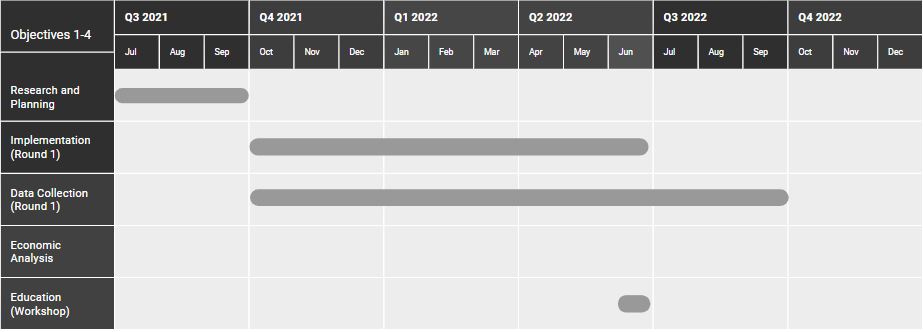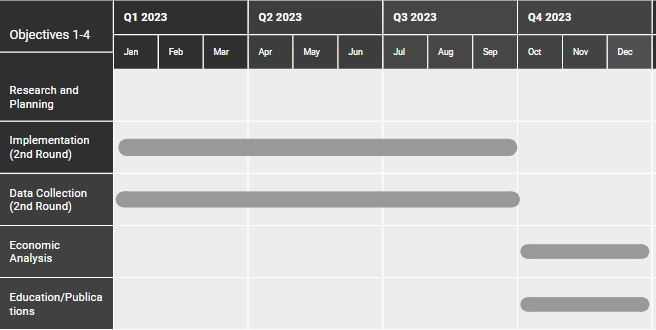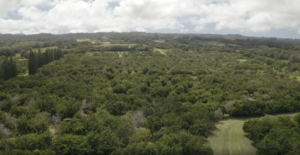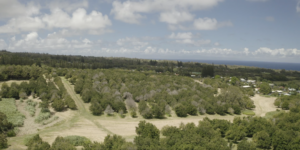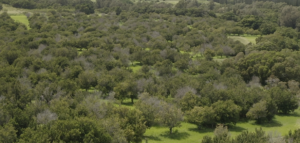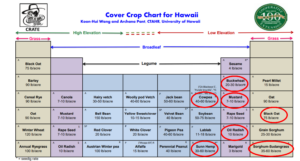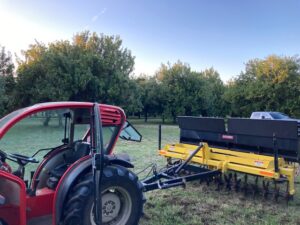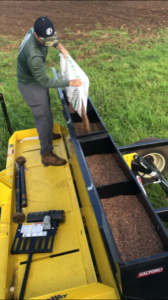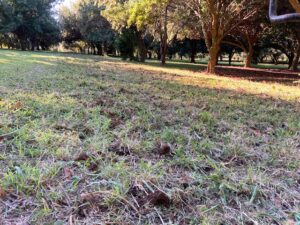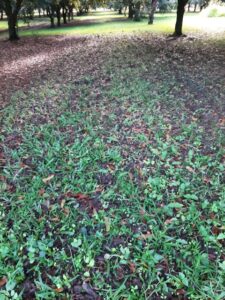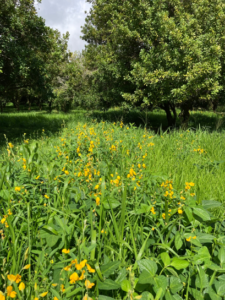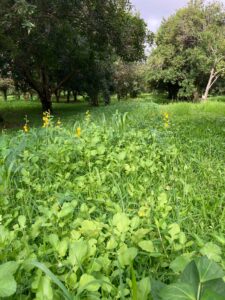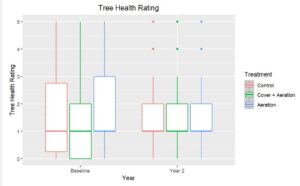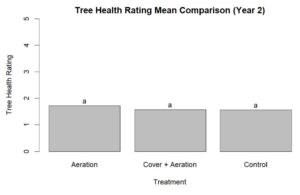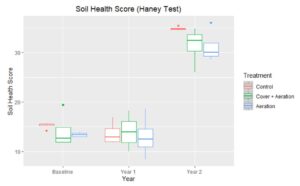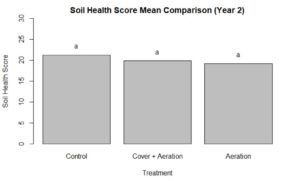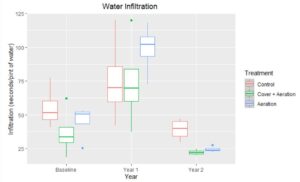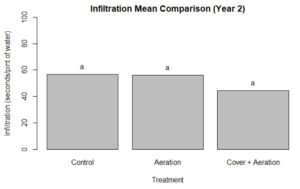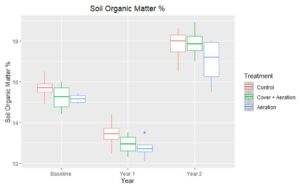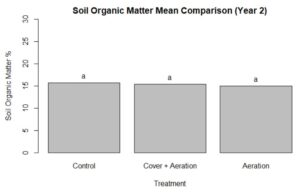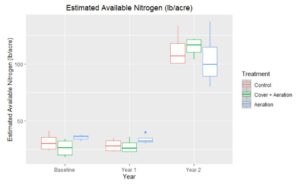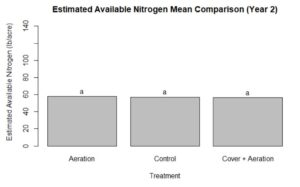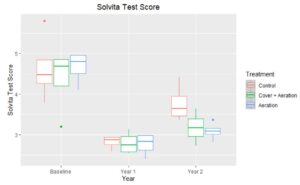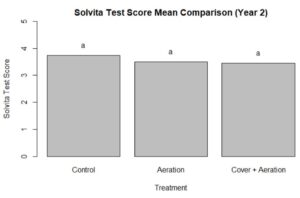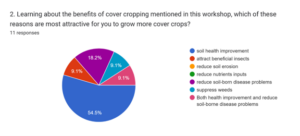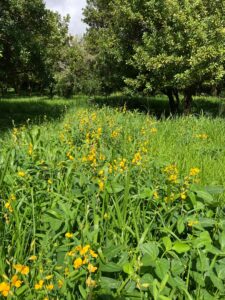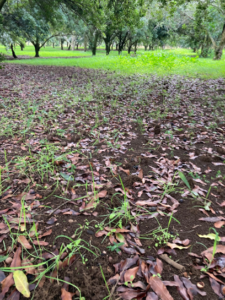Final report for FW21-381
Project Information
The Hawaii macadamia industry had a farm gate value of $48.8 million dollars in 2019-2020, making it one of the highest value crops in the state of Hawaii (USDA NASS 2019). But in recent years macadamia farms in Hawaii have experienced devastating tree losses due to soil-borne root infections of Phytophthora spp. As farmers in Hawaii both replant and manage existing orchards, sustainable approaches to combat the impacts of Phytophthora root rot are needed.
This project evaluates the potential for integrating cover crops in existing orchards to mitigate the incidence and effects of Phytophthora root rot on macadamia nut trees. It is well known that incorporating cover crops into farming systems can improve soil structure, add soil organic matter, provide nutrients, and encourage soil microbial diversity. However, research on the efficacy of establishing cover crops in perennial orchard systems with minimal disturbance to soil health so as to maximize soil-borne pathogen suppression is needed. Island Harvest Inc., operating over 700 acres of orchard, demonstrates the use of an AerWay overseeder to plant two cycles of cover crop mix in their orchards to prove the concept of conservation tillage cover cropping system could lead to the mitigation of Phytophthora root rot hampering the macadamia industry in Hawaii statewide. The results of this project will be disseminated to macadamia nut growers through the University of Hawaii extension publications, field days, and workshops at Hawaii Macadamia Nut Association meetings.
- Quantify the mitigation of Phytophthora incidence and severity when integrating cover crops in macadamia orchards
- Quantify other soil health benefits of integrating cover crops in macadamia orchards
- Estimate the economic return of controlling Phytophthora using cover crops
- Educate macadamia farmers on using cover crops as a method for sustainable cultural control of Phytophthora.
Cooperators
- - Producer
- - Technical Advisor (Educator and Researcher)
Research
Abstract
Root diseases caused by Phytophthora spp. have contributed to the decline in health and production of macadamia nut trees throughout Hawai'i (Keith et al., 2010 and Sugiyama et al., 2020). This disease has resulted in the loss of thousands of trees and threatens the future of the Hawai'i macadamia industry (Keith et al., 2010). Growers seek sustainable approaches to combat the impact of root rot and tree decline caused by Phytophthora spp., other than the recommended chemical controls that have seen limited adoption by Hawai’i farmers. This project evaluated the potential of using cover crops and soil aeration as cultural controls in macadamia orchards to mitigate the impact of Phytophthora spp. It is well known that incorporating cover crops into farming systems can improve soil structure, add soil organic matter, provide nutrients, and encourage soil microbial diversity which mitigate the impact of various plant pests and diseases (McSorley et al., 1995). However, research on the efficacy of establishing cover crops in perennial orchard systems, with minimal disturbance to soil, to maximize soil-borne pathogen suppression is needed. This project evaluated the mitigation of Phytophthora spp. damage as well as quantified other soil health benefits while integrating cover crops in macadamia orchards. A cover crop mix of cowpeas (Vigna unguiculata), sunn hemp (Crotalaria juncea), black oats (Avena strigosa), sudan grass (Sorghum⨯ drummondii), brown mustard (Brassica juncea), tillage radish (Raphanus sativus), and buckwheat (Fagopyrum esculentum) was selected as a mix designed in an attempt to improve soil physical, biological, and chemical properties in order to aid pathogen suppression. This project is a farmer initiated demonstration that took place at Island Harvest, an organic macadamia farm in Kohala, Hawai’i.
Introduction
Phytophthora spp.
Phytophthora is an oomycete, or water mold, which is a fungus-like organism known for causing damage across a wide range of crops throughout the world. As of 2012, there were approximately 100 species of Phytophthora that have been described throughout literature (Laurens et al, 2012). In Hawai’i, a range of Phytophthora spp. affect many economically important crops in Hawai’i such as macadamias, orchids, papaya, tomato, avocado, ohia and many others plants through symptoms such as root rot, blight, and fruit rot (Mueller-Dombois et al., 2022). In macadamias, the main species of Phytophthora causing damage in Hawai’i are suspected to be P. tropicalis, P. cinnamomi, and P. heveae (Sugiyama et al., 2020). Macadamia trees typically show symptoms of leaf yellowing or browning, stem cankers, trunk bleeding, sparse or bare canopy, and general tree decline resulting from the pathogen attacking the root system. These symptoms typically show up after prolonged periods of water-logged soil that allow Phytophthora to spread and proliferate. Phytophthora damage in macadamias is thought to be worsened by poor soil drainage and fertility, tree age, and susceptibility of root stock and tree variety (Akinsanmi et al., 2013).
Declining Macadamia Production in Hawai’i
In 2000-2010, average annual gross yield for macadamias in Hawai’i was 58.6 million lbs with an average of 3,080 lbs per acre. In the last decade from 2011-2020, this average gross yield has decreased to 51.6 million lbs with an average of 2,730 lbs per acre (USDA NASS 2020). This decline has continued with the most recent assessment in 2022 showing total macadamia production down to 37.7 million lbs and 2,330lbs per acre (USDA NASS 2022). Farmers reported disease, insects, feral hog damage, and marketing challenges during the most recent report (USDA NASS 2022).
While no formal damage assessment has been completed, macadamia industry stakeholders recognize that tree decline and death caused by disease is a major culprit causing yield decline. It has been observed that growers located in heavy rainfall areas where soils are prone to prolonged periods of water-logging are experiencing accelerated tree death and decline.
At the site of this project in Kohala, Hawai’i, the organic macadamia farm managed by Island Harvest has sustained significant tree damage that is thought to largely be caused by Phytophthora spp. In certain orchard blocks, Island Harvest has seen tree mortality rates near 50% believed to be caused by Phytophthora, resulting in yield loss (Figure 1), making clearing, and replanting the orchard a necessity. However, most of Island Harvest’s orchards show early signs of decline, but severe yield loss has yet to be realized. If formal assessments of Phytophthora damage were done, management from Island Harvest estimates that tree loss across macadamia farmers in Hawai’i would average between 10-20%, with some farms experiencing up to 50-75% tree loss. For Island Harvest and many macadamia farmers in Hawai’i, it is imperative to mitigate the damage caused by Phytophthora spp.
Figure 1 Aerial view of mild damage (left), moderate damage (right), and moderate-severe (bottom) believed to be caused by Phytophthora at Island Harvest in Kohala, Hawai’i
Potential of Cover Crops and Soil Aeration
Research on the use of cover crops in conservation tillage systems to improve soil health and suppress plant-parasitic nematodes in Hawai’i has been well documented (Wang et al., 2008), but there is limited research on the potential to suppress soil pathogens, particularly in orchard cropping systems. Using cover crops in existing orchards and prior to replanting of orchards shows the potential to improve soil health and mitigate the impacts of Phytophthora spp. through the improvement of physical, chemical, and biological characteristics of the soil.
This project investigated the use of conservation tillage along with mix cover cropping in macadamia orchards for soil health management to enhance soil ability to antagonize soilborne Phytophthora. Island Hawai’i found the AerWay AWATS 100AG (Salford Group Inc., Osceola, Iowa) be an effective machine for planting cover crop in a conservation tillage manner because it has shatter tines for soil aeration to loosen a compacted soil, followed by seeder boxes at the back to direct seed through drop tubes, and a bottom deflector plate to bury seeds to the desired soil depth (Figure 2). This machine accomplishes uniform seed distribution and provides good seed-soil contact without aggressive soil disturbance.
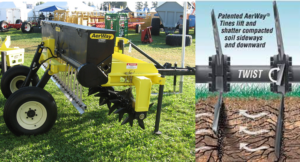 Figure 2 AerWay AWATS 100AGS manufactured by Salford Group Inc. Osceola, Iowa
Figure 2 AerWay AWATS 100AGS manufactured by Salford Group Inc. Osceola, Iowa
It was hypothesized that the use of cover crops and aeration could improve the physical, chemical, and biological soil characteristics that would mitigate the negative impact of Phytophthora, thereby improving macadamia tree health (Figure 3).
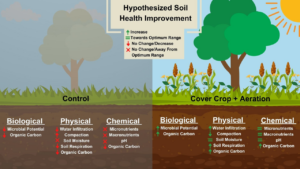 Figure 3 Hypothesized improvements of soil health metrics measured during project
Figure 3 Hypothesized improvements of soil health metrics measured during project
Research Design and Methodology
This project aimed to demonstrate to macadamia farmers how cover crop establishment in a conservation tillage system could improve soil health and reduce Phytophthora impact. The impact of Phytophthora and various soil health indicators were used to help determine the effectiveness of cover cropping and aeration. Data was measured over the course of about two years from January 2022 to December 2023 in macadamia orchards in Kohala, Hawai’i.
Project Objectives:
- Quantify the mitigation of Phytophthora incidence and severity when using cover crops and aeration in macadamia orchards.
- Quantify other soil health benefits of integrating cover crops and aeration in macadamia orchards.
- Educate macadamia farmers on using cover crops and aeration as a potential method for sustainable cultural control of Phytophthora.
- Estimate the economic return of mitigating the impact of Phytophthora using cover crops and aeration.
Research Plan
A macadamia nut orchard in Kohala, Hawai’i managed by Island Harvest, a certified organic farm, was the location for this project. Two field trials per year were conducted in 2022 and 2023, i.e. a total of 4 cover crop trials were performed for this study. Treatments were laid out in a randomized block design; four blocks each containing a cover crop + aeration treatment, aeration only treatment, and an untreated control. The untreated control still had existing grasses and groundcover present. Each treatment plot included approximately 20 trees in an area of 60’x150’ (9,000 ft2) based on existing tree spacing of 15’x30’. Because Island Harvest used an aerator with over seeder attachment to establish the cover crops, the treatment with the cover crop was simultaneously aerated while the seed is planted as this is how the AerWay over seeder functions. The seeder attachment was shut off for the aeration only treatment.
The field map of the three treatments with four replicates of each were as follows:
Block 1
T1: Cover Crop + Aeration
T2: Aeration
C: Control
Block 2
T1: Cover Crop + Aeration
T2: Aeration
C: Control
Block 3
T1: Cover Crop + Aeration
T2: Aeration
C: Control
Block 4
T1: Cover Crop + Aeration
T2: Aeration
C: Control
 Figure 4 Project layout showing four blocks with three replicates of each treatment
Figure 4 Project layout showing four blocks with three replicates of each treatment
The cover crop mix was composed of sunn hemp (Crotalaria juncea), cowpea (Vigna unguiculata), tiller radish (Raphanus sativus), black oat (Avena strigosa), brown mustard (Brassica juncea), sorghum-sudan (Sorghum drummondii) and buckwheat (Fagopyrum esculentum) using the recommended seeding rate in Cover Crop Chart for Hawai’i (Figure 5). The composition of the mix was selected for various benefits each plant could bring, such as building soil organic matter (buckwheat), adding soil nitrogen (cowpea/sunn hemp), breaking up soil compaction (oil radish), adding biomass (black oat/sorghum-sudan), and potential biofumigation (mustard).
Figure 5 Cover crop seeding chart (Courtesy of project Technical Adviser Koon-Hui Wang)
Most legumes, such as sunn hemp and cowpea, attract Southern Green stink bug (Nezara viridula), a common pest of macadamia nuts (Evans et al., 1988). The cover crop and surrounding area were informally monitored for potential increases in stink bug populations during the project and few were found. Island Harvest did see an overall increase in stink bug damage to macadamias during the 2023 season, but this was throughout their orchards and not just the project area. Further research would need to be conducted to evaluate the impact cover crops have in macadamias orchards as it pertains to attracting both pests and beneficial insects.
Because the cover crop and aeration interfere with the mechanical harvesting of the macadamias from August-December, the cover crops were planted only during the macadamia offseason. Cover crops were planted in two 90-day cycles starting in January of 2022. Two cycles were completed in 2022 from January-June and two cycles in 2023 from January-June. After each 90-day cycle, the cover crop was terminated with a flail mower (Figure 6).
Figure 6 Pictures showing seeder (top-left), aeration treatment (top right), and cover crop + aeration treatments (bottom)
Data collection was done each year after two cycles were completed, and started with a baseline collection in January 2022 and subsequent collections in July after the second 90-day cycle. The same process was used in 2023. Soil samples were collected systematically from each treatment and subjected to soil respiration test using the Solvita gel system and a digital reader. The Solvita respiration test measures CO2 released from the soil which is generated by microbes. This direct biological response is an indicator of microbial activities in the soil therefore relating to soil health. Soil samples were also sent to Brookside Laboratories for nutrient analysis as well as soil health indicators using the Haney Test. Field tests for soil moisture and soil water infiltration were also conducted, using a single ring water infiltration method.
The figure below illustrates the systematic sampling methods used to take six samples from each treatment for soil tests, compaction, water infiltration, and moisture. The six samples of soil from each treatment were mixed to create an aggregate sample to be used for chemical and biological analysis. Every tree in the project area was rated before and after the project for tree health scoring.
 Figure 7 Systematic sampling method for soil, compaction, water infiltration, and moisture.
Figure 7 Systematic sampling method for soil, compaction, water infiltration, and moisture.
Phytophthora incidence samples were taken once during the project from the trunk of four trees per treatment to confirm Phytophthora in the project area. Trunk samples were collected systematically from every third three in the row using a drill to obtain wood shavings from potentially infected areas of the tree trunk (Figure 7). The samples were then tested in a buffer solution with an Agdia ImmunoStrip®. The Agdia Phytopthora test is not species specific but confirms whether Phytophthora is present. The Agdia test and this sampling method has not been verified for use in macadamias, but positive results obtained does indicate the presence of Phytophthora.
Figure 8 Drill hole sample of tree trunk (left) and an Agdia positive test result (right).
The method for measuring Phytophthora severity in existing orchards was using a modified diseased tree health rating scale of Darvas et al. (1984) and Gabor et al. (1990) that has been adapted by macadamia disease specialists O.A. Akinsanmi and Andre Drenth (2016) from the University of Queensland. A 0-5 scale was used, where 0= vigorous and healthy, no stem canker symptoms; 1 = full canopy with mild stem canker symptoms; 2 = sparse canopy with severe stem canker symptoms; 3 = sparse and mild dieback canopy and sever stem canker symptoms; 4 = very sparse and severe dieback canopy, severe stem canker symptoms with offshoot from rootstock and 5 = dead tree. A limitation of this scale is that it was developed specifically for Phytophthora cinnamomi, and each Phytophthora species can display unique symptoms. However, each tree in the project was given a rating at the beginning and conclusion of the project and the comparison of the two ratings allowed for decline and improvement to be quantified.
Full List of Measurements Taken
- Soil chemical analysis (Macronutrients, micronutrients, pH)
- Haney Test
- H3A-4 Extractable Ca, Mg,K, Na, S, P, Mn, Zn, B, Fe, Al,
- H3A-4 Extractable Phosphate (PO4-P),
- H3A-4 Extractable Available Nitrogen (NH4-N + NO3-N),
- Water Extractable Organic Carbon and Water Extractable Total Nitrogen,
- Soil Respiration (Solvita Test)
- Haney Test
- Soil moisture
- Soil water infiltration (seconds/pint of water)
- Compaction (psi)
- Tree Rating (0-5)
- Cover crop biomass
- Soil Respiration (Solvita Test)
The measurements taken over the course of two years were expected to give an indication of the effectiveness of cover crops and aeration on soil physical, chemical, and biological characteristics. If improvement was seen in these soil health indicators, it was hypothesized that there could be some measured response in tree health.
The Haney test provided a soil health scoring tool that could be compared across treatments and over the course of the project. The soil health score was measured using the following components of measured for the Haney test and formula:
- CO2-C respiration
- C:N ratio
- WEOC (water extractable organic carbon)
- WEON (water extractable other nutrients)
- Soil Health = (CO2-C/10) + WEOC/50 + WEON/10
- Good score is greater than 7
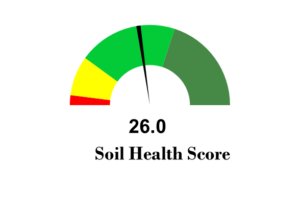 Figure 9 Example Haney Test score indicating good soil health
Figure 9 Example Haney Test score indicating good soil health
Additionally, a partial budget cost analysis was conducted with an attempt to evaluate cost associated with conservation cover cropping practices. This included the cost of seed, labor, and equipment to install and terminate the cover crop.
Objective 1: Quantify the mitigation of Phytophthora incidence and severity when using cover crops and aeration in macadamia orchards.
Phytophthora Incidence
Of the 48 trees sampled in the trial, 9 came back positive for Phytophthora using the Agdia test. Something of note was that Block 3 and Block 4 only returned 1 of the positive samples, whereas Blocks 1 and 2 returned 8 of the positive samples. Based on the topography and layout of the project, it appears that Phytophthora was more readily present in this section of the orchard. It is hypothesized that this could be due to the way water flows through this section of the orchard and Phytophthora was spreading more readily between these trees in close proximity.
A decrease or increase in Phytophthora incidence was not able to be measured for this project due to a limited amount of Agdia tests available to Island Harvest. Additionally, the Agdia tests and the methods used for collecting the samples was not a verified test for Phytophthora detection in macadamia orchards. It is possible that a tree could have Phytophthora and not necessarily return a positive test. The Agida tests also do not tell which Phytophthora species are present. Despite these limitations, we can say that the 9 positive tests verify that Phytophthora was present in the project blocks.
Tree Health Score
Because the Agdia test was only able to be used to verify Phytophthora presence in the macadamia orchards at a given time, the tree health score was intended to provide an assessment of tree status compared from beginning of the project to the end. The improvements or decline cannot be directly attributed to how trees are responding to Phytophthora, but the score can show how the tree health was impacted by the treatments.
The results showed that tree health in the cover crop + aeration and aeration treatments did not differ from the control over the course of the project (Figure 10). According to the tree health scale used, a lower score is a healthier tree (0 = full canopy) and a higher score indicates a less healthy tree (5 = dead tree). The results show that there is a nominal decrease in tree health from the baseline to year two in all treatments and the control. However, there was no significant difference between the treatments or across years in the tree health rating.
Figure 10 Mean tree health rating across treatment and year (above), box plot graphically representing tree health rating mean scores and range (bottom left), and bar graph representing no significant difference in treatments versus control after Year 2.
Objective 2: Quantify other soil health benefits of integrating cover crops and aeration in macadamia orchards.
Consistent with the results from the tree rating, no significant difference was found in soil health benefits between the treatments and control. There were significant improvements in certain metrics (soil health score, water infiltration, soil organic matter %, and available nitrogen) in year two compared to previous years, but this was seen across all treatments and the control. This data shows that there were some soil health improvements, but it could not only be explained by the project treatments.
Soil Health Score (Haney Test)
The soil health score (Haney Test) showed a significant increase from the baseline and year one to year two but there was no significant difference between the treatments and the control (Figure 11).
Figure 11 Mean soil health score across treatment and year (left) and mean comparison bar graph representing no significant difference in treatments versus control after Year 2 (right).
Water Infiltration
Water infiltration improved in year two of the trial, evidenced by the decrease in time it took for a fixed amount of water to infiltrate the soil (lower score = better infiltration). Additionally, the data from year two showed that aeration and cover + aeration improved water infiltration rates compared to the control. However, when a mean comparison test was performed, the aeration and cover + aeration treatments were not significantly different from the control (Figure 12).
Figure 12 Mean water infiltration time across treatment and year (left) and mean comparison bar graph representing no significant difference in treatments versus control after Year 2 despite a nominal improvement in infiltration rate of the aeration and cover + aeration treatments compared to the control (right).
Soil Organic Matter
Soil organic matter percentage significantly increased in year two compared to the previous years. But when a mean comparison test was performed, no significant difference was found between the treatments and the control (Figure 13).
Figure 13 Mean Soil Organic Matter (%) across treatment and year (left) and mean comparison bar graph representing no significant difference in treatments versus control after Year 2 (right).
Estimated Nitrogen Available to Crops
Estimated nitrogen available to crops also increased in year two compared to the previous years. However, when a mean comparison test was performed, no significant difference was found between the treatments and the control (Figure 14).
Figure 14 Mean Estimated Available Nitrogen (lb/acre) across treatment and year (left) and mean comparison bar graph representing no significant difference in treatments versus control after Year 2 (right).
Solvita Test
The Solvita test scores decreased in the treatments and control from the baseline to year 1 and then slightly rebounded in year two, but not to previous levels. Again, while there were differences in the Solvita test scores from year to year, there was no significant difference between treatments and the control (Figure 15).
Figure 15 Mean Solvita test score across treatment and year (left) and mean comparison bar graph representing no significant difference in treatments versus control after Year 2 (right).
Compaction and soil moisture are not graphically represented, but the data also did not show significant differences between treatments and control.
Objective 3: Educate macadamia farmers on using cover crops and aeration as a potential method for sustainable cultural control of Phytophthora.
Macadamia growers in Hawai’i were the target audience for this research, but results could also be valuable for orchardists growing crops impacted by Phytophthora such as avocados, papaya, and various tropical fruit trees in Hawai’i.
The audience was primarily reached in three different ways: 1) a published field note in collaboration with the University of Hawai’i at Mānoa, College of Tropical Agriculture and Human Resources (CTAHR) Cooperative Extension, 2) presenting at Hawai’i Macadamia Nut Association annual meeting, and 3) an on-site field days at Island Harvest.
Presentation: A presentation with updates on the research was given at the Hawai’i Macadamia Nut Association annual membership in July 2022 with over 100 attendees from the macadamia industry throughout Hawai'i.
Field Day/Demonstrations: One field day and two on-farm demonstrations were hosted at the experiment site to show farmers and other stakeholders the operation of AerWay over seeder and results of the project. This allowed farmers to see the benefits and challenges of incorporating cover crops (through conservation tillage practice) in macadamia orchards, the equipment used, and other important takeaways of the project.
In July of 2022, Island Harvest hosted a “Healthy Soil, Healthy Orchard” field day in collaboration with Oahu RC&D and CTAHR Cooperative Extension through co-PI Wang where there were presentations and demonstrations of cover cropping. From that field day survey, 100% of survey participants (n=11) said they would grow cover crops using reduced tillage practices. Additionally, the graph below shows that most participants were interested in using cover crops for soil health improvement.
A video recapping the cover crop field day can be found here, provided by project Technical Adviser Koon-Hui Wang:
Cover Crop Field Day Video (Link)
Figure 16 Survey question results from “Healthy Soil, Healthy Orchard” field day
Field Note: A field note in collaboration with the University of Hawai’i CTAHR will be posted online documenting the methods of establishing cover crops in macadamia orchards and the results of the research. Field notes were submitted and published in Hānai’Ai, a newsletter for local farmers in the form of an extension bulletin.
Objective 4: Estimate the economic return of mitigating the impact of Phytophthora using cover crops and aeration.
The following gives a breakdown of cost per acre to manage an organic orchard floor with cover crops, aeration and mowing, or just mowing alone (control). The added cost to integrate cover cropping and aeration is about a 30% increase compared to the cost of just mowing at Island Harvest’s organic macadamia farm. Mowing costs are still the largest single line item cost at Island Harvest, but the cost of cover crop seed in Hawai’i makes this practice relatively expensive.
It is estimated that it would cost an additional $124.35 per acre per year to integrate cover crops + aeration versus just mowing alone. At the price of $1.20/lb for macadamias, it would take realizing an overall yield increase of 103 lbs per acre per year to justify the cost of implementing this practice, which would be a 4.4% increase for an orchard producing the average of 2,330 lbs per year (USDA NASS 2022). While this project does not provide evidence for this yield increase, these numbers provide a benchmark for the type of long term increases a farmer would want to see by integrating cover crops into their orchard.
Cost Analysis
|
Practice |
Seed Cost |
Labor (mowing) |
Labor (practice) |
Equipment (mowing/seeder) |
Total Cost per acre per year |
|
Cover Crop + Aeration |
$72/ac |
$300/ac |
$25/ac |
$84.35/ac |
$481.35 |
|
Aeration |
$0.00 |
$300/ac |
$15/ac |
$84.35/ac |
$399.95 |
|
Control |
$0.00 |
$300/ac |
$0/ac |
$64/ac |
$364.00 |
Table 1. Partial cost analysis of orchard floor management at Island Harvest Inc.
Note: Estimated cost of orchard floor management costs provided by Island Harvest Inc. Equipment cost based off of upfront equipment cost covering 200 acres per year for 7 years. Seed costs landed in Hawaii is $1.44/lb and planted at 50lb/ac.
Limitations
It is likely that the largest limitation of this project stems from the difficulty of establishing cover crops in a mature macadamia orchard in a tropical environment. Island Harvest attempted to establish perennial cover crops in their orchard in previous years but was unable to have success. This project attempted to use cycles of annual cover crops, which was somewhat successful, but still had challenges. In shaded areas of the orchard, the cover crop had a hard time establishing and growing. Due to the tropical climate in Hawai’i, the competition from other grasses and weeds also made it difficult for the cover crop to establish and grow.
Figure 17 Cover crop in an open canopy (left) showing growth with competition versus a closed-shaded canopy (right) showing lack of growth and establishment.
Island Harvest’s orchards are also non-irrigated which is not ideal for cover crops that prefer consistent soil moisture. In the first year of the project, 2022, rainfall was adequate for the cover crops to establish and grow. However, in the second year of the project in 2023, rainfall quantities and timing limited the growth of the cover crops. Much of the cover crops planted in 2023 did not reach over a foot high in growth and some failed to germinate.
Because Island Harvest’s farm is certified organic, the control plots in the project had existing ground cover from grasses and other vegetation. The existing ground cover in the control may serve a similar purpose to planted cover crops by providing biomass, insect habitat, root exudates, and other benefits that come with having the soil covered as opposed to bare ground. Treatments of an annual cover crop that are grown for less than half the year would also likely limit the positive impact they can have compared to the control.
Conclusion
Given the decline of the Hawai’i macadamia industry and the limited adoption of chemical control methods by growers to control Phytophthora, it is important that alternatives to mitigating pathogen damage be explored. Phytophthora causes severe plant damage all over the world to macadamias and many other crops and some growers, particularly certified organic producers, do not have the options or desire to use chemical controls. Providing cultural control methods for pathogen suppression, that have other potential soil and plant health benefits, can give farmers a more holistic way to approach the health and productivity of their crops.
This project was unable to show that aeration or cover crops with aeration was able to provide pathogen suppression or improve soil health when compared to the control. There were increases in soil health metrics, such as soil organic matter, available nitrogen, and the Haney Test soil health score, but these metrics equally increased in the control plots. The results could have been due to difficulties with establishing the cover crop in an orchard setting, as well as existing ground cover providing similar benefit as a seeded cover crop. It would be helpful to conduct a similar study in a non-organic orchard where the control plots were bare ground instead of existing vegetative cover.
It is unlikely that the use of cover crops and aeration alone can reverse or treat Phytophthora damage in macadamia orchards. However, findings from this research could be built upon to develop integrated disease management approaches that create more resiliency in agronomic systems, like it could for macadamias. There were some signs of success in treatments of cover crops and aeration from baseline to the end of the project in year two, showing that cover crops and aeration can provide benefit to orchard systems. However, further research and experimentation on what cover crops can be established and grown in Hawai’i orchard systems could lead to successful options for farmers.
Research Outcomes
Given the decline of the Hawai’i macadamia industry and the limited adoption of chemical control methods by growers to control Phytophthora, it’s important that alternatives to mitigating pathogen damage be explored. Phytophthora causes severe plant damage all over the world to macadamias and many other crops and some growers, particularly certified organic producers, do not always have the option or desire to use just chemical controls. This project helped explore potential sustainable approaches to disease management in orchard crops. Providing cultural controls for pathogen suppression that have other potential soil and plant health benefits can give farmers a more holistic way to approach the health and productivity of their crops.
This project showed that it is unlikely that the use of cover crops and aeration alone can reverse or treat Phytophthora damage. However, findings from this research could be built upon to develop integrated disease management approaches that create more resiliency in agronomic systems, like it could for macadamias. There were some signs of success in treatments of cover crops and aeration from baseline to the end of the project in year two, showing that cover crops and aeration can provide benefit to orchard systems. Further research and experimentation on what cover crops, particularly perennials, can be established and grown in Hawai’i orchard systems could lead to successful options for farmers.
Education and Outreach
Participation Summary:
Macadamia growers in Hawai’i were the target audience for this research, but results could also be valuable for orchardists growing crops impacted by Phytophthora such as avocados, papaya, and various tropical fruit trees in Hawai’i.
The audience was primarily reached in three different ways: 1) a published field note in collaboration with the University of Hawai’i at Mānoa, College of Tropical Agriculture and Human Resources (CTAHR) Cooperative Extension, 2) presenting at Hawai’i Macadamia Nut Association annual meeting, and 3) an on-site field days at Island Harvest.
Producer farm, Island Harvest, hosted "Healthy Soil, Healthy Orchard: from Planning to Practices" in June of 2022 in collaboration with Oahu Resouce Conservation and Development Council , with primarily farmers and agricultural professionals attending. In addition to soil health discussions, Island Harvest shared initial project observations and demonstrated cover cropping in a macadamia orchard.
A short video documenting the field day was created by co-pi Koon-Hui Wang. The video can be found here.
Andrew Trump of Island Harvest also shared a 30-minute PowerPoint presentation giving an overview of research at the annual Hawaii Macadamia Nut Association Annual meeting in July of 2022 to over 100 participants, mainly macadamia farmers and industry stakeholders. A similar presentation was given to the University of Hawaii Tropical Plant and Soil Science graduate seminar class of about 20 students.
Other Tours and On-Farm Demonstrations:
-Hosted University of Hawaii undergraduate students to help participate in initial project implementation and data collection. Educated students through field work and conversation about plant disease effecting macadamia orchards and soil health outcomes this project intends to improve.
-Hosted Western Region Cover Crop Council.
-Hosted USDA-PBARC researchers at project site to show project progress and get advice from the local plant pathologist.
Education and Outreach Outcomes
Using a variety of methods to achieve education and outreach for this project was helpful in disseminating information. This project included the hosting of three field days/on-farm demonstrations, a presentation, and a field note publication. Hosting field days/on-farm demonstrations was a great way for farmers and agriculture stakeholders to see first hand the materials and methods of the project and get an idea of whether cover cropping and/or aeration could be an option for them. The presentation at the Hawai'i Macadamia Nut Association (HMNA) annual meeting allowed over 100 attendees to hear about the project. Finally, publishing a field note in Hanai'Ai, in collaboration with the University of Hawai'i College of Tropical Agriculture, allows for more stakeholders to be reached and a written document about the project to exist online. This approach to reach stakeholders by using a variety of methods that are hands-on, written, and oral/visual allowed for greater chance of reaching intended audiences and is recommended for other projects. Island Harvest did not take surveys of all attendees of the field day and at the HMNA conference which limited the number of producers and stakeholders reporting changes in their outlook, even though many could have.
Soil Health Improvement, Attracting Beneficial Insects, Reducing Soil-Borne Diseases, Weed Suppression
